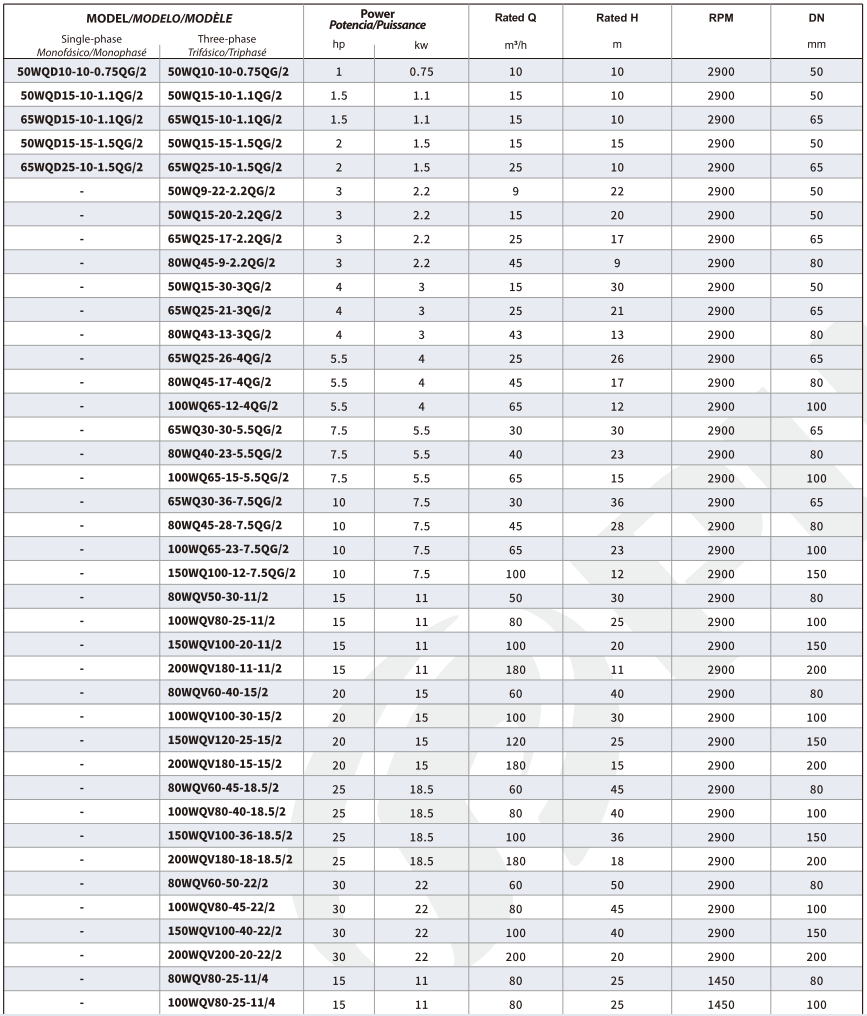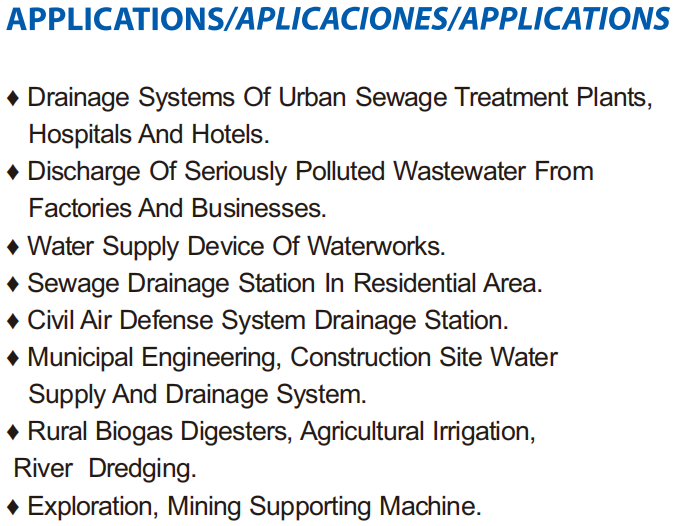When managing wastewater systems, it's crucial to understand the difference between sewage pumps and ejector pumps, as they are designed for different functions and applications. Both play important roles in handling wastewater, but choosing the right one depends on your specific needs—whether for a residential septic system, a commercial facility, or municipal infrastructure.

Figure | Purity Sewage Pump WQQG
A sewage pump is used to transport untreated wastewater from a property to a septic tank, sewer line, or municipal system. It works by using a motor-driven impeller to generate pressure that moves the sewage over short distances. Sewage pumps are designed for low-pressure, high-flow applications.
High Flow, Low Pressure: Sewage pumps handle large volumes of wastewater (up to 200 gallons per minute) but do not work well under high pressure. They are ideal for short-distance transfers, typically within residential properties or small commercial facilities.
Non-grinding Mechanism: Unlike ejector pumps, sewage pumps usually rely on an impeller or vortex design, which uses centrifugal force to move wastewater. They are suitable for clear wastewater without large solids or fibrous materials.
Limited Distance: Sewage pumps work well over short distances (typically up to 750 feet), transporting wastewater to a nearby gravity-fed sewer or septic system.
Residential Use: Homes with septic tanks use sewage pumps to move wastewater to the septic system or sewer line.
Small Commercial Use: Small businesses or facilities with low to moderate sewage volume may also use sewage pumps for short-distance wastewater transport.

Figure | Purity Sewage Pump WQQG Parameters
An ejector pump is designed for more demanding sewage handling applications. It is used to pump wastewater over long distances or high elevations, typically to a municipal sewer system or a higher treatment plant. Ejector pumps have grinding mechanisms that break down solids into slurry, making it easier to pump through longer pipes.
Low Flow, High Pressure: Ejector pumps are optimized for high-pressure, low-flow systems. They can pump wastewater over long distances or vertical lifts (hundreds of feet) and are often used in applications where gravity cannot assist.
Grinding Mechanism: Ejector pumps are equipped with grinding blades to shred waste into smaller particles or slurry, ensuring that tough materials like paper or plastic are broken down before being pumped.
Not Suitable for Septic Tanks: Because the grinding process creates a slurry, ejector pumps are generally unsuitable for septic systems, as the mixture can overwhelm the system.
Municipal and Commercial Systems: Ejector pumps are used in commercial and municipal systems where wastewater needs to be pumped from lower areas to higher elevations or through long distances.
Long-Distance, High-Pressure Conveyance: They are ideal for systems requiring high-pressure pumping over long distances or from basements to higher sewer lines.

Figure | Purity Sewage Pump WQQG Usage scenarios
When choosing between a sewage pump and an ejector pump, consider the specific needs of your wastewater system:
For Short-Distance, Low-Pressure Applications: If you are managing wastewater in a residential setting or small business, a sewage pump is the right choice. It handles large volumes of wastewater and is effective for short-distance, low-pressure transport.
For Long-Distance, High-Pressure Applications: If your system requires high-pressure pumping over long distances or vertical lifts, an ejector pump is the better option. These pumps can break down waste and transport it effectively through extended pipe systems.
In summary,sewage pumps are suitable for short-distance, low-pressure applications and are ideal for residential and small commercial use, while ejector pumps are designed for high-pressure, long-distance transport and can handle more challenging waste. Understanding these differences will help you select the right pump for your specific needs.
For those looking for reliable sewage pumps,Purity offers high-quality models designed for both residential and industrial use. Featuring advanced sealing technology and clog-free operation,Purity sewage pumps provide an excellent solution for efficient wastewater management.